The 2019 Mercedes-Benz C300 Coupe Is Quicker, Still Looks Great
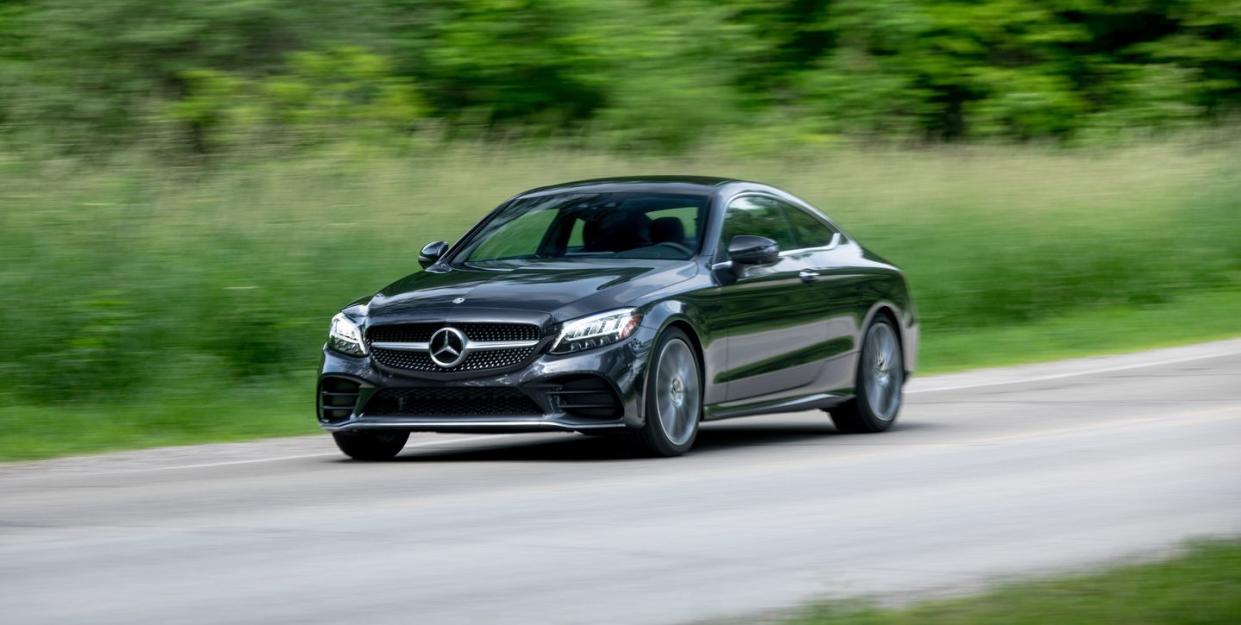
Opt for nearly any of today's entry-luxury vehicles and you're in for a four-cylinder engine. Sure, most players in this space offer a more powerful six-cylinder option, but BMW's 3-series, Audi's A4, and Mercedes-Benz's C-class all come standard with a turbocharged inline-four. Most of these "base" powerplants deliver surprisingly hot performance, though that wasn't quite the case with the Benz—at least it wasn't until this year.
For 2019, Mercedes has replaced its laggard-for-the-class engine in the entry-level C300 sedan, convertible, and coupe with an all-new 2.0-liter turbo four. Horsepower is up 14 ponies, to 255, while peak torque remains at a stout 273 lb-ft. This change, along with a swap from a seven-speed automatic transmission to Benz's latest nine-speed unit, which happened for the 2018 model year, are the primary contributors to the latest C300's improved performance.
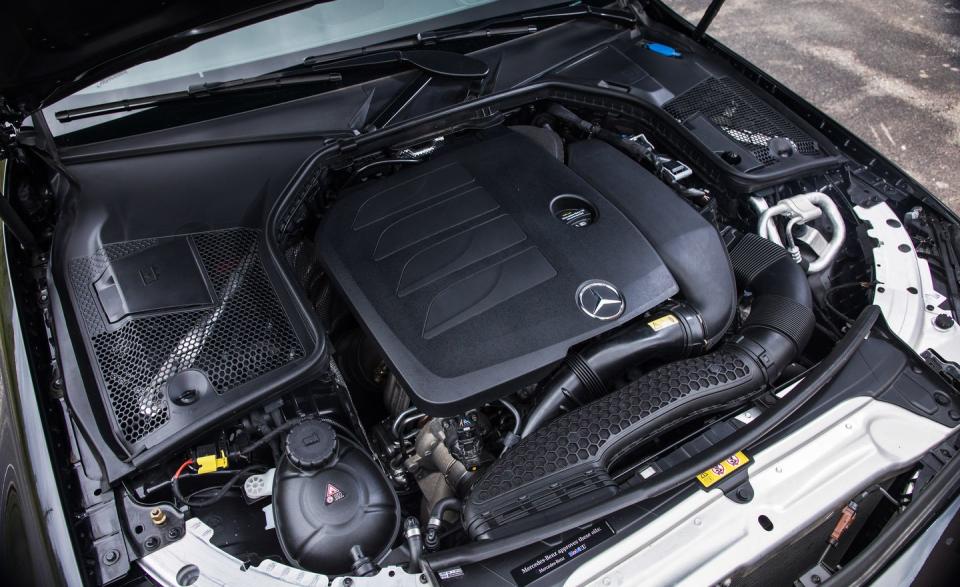
An Effective Upgrade
In this vehicle class, such base-model four-cylinder engines exist at least partially to provide buyers (and automakers seeking to please regulators) a more fuel-efficient option, and the new engine has massively upped the C300 coupe's fuel-economy game. In our 75-mph highway fuel-economy test, the rear-wheel-drive C300 delivered an astonishing 37 mpg—6 mpg better than the EPA's highway estimate. If you want maximum efficiency in your compact Mercedes, skip the available 4Matic all-wheel-drive system. The only 2017 C300 coupe we tested came with that feature, and between it and the older engine, that model scored a so-so 29 mpg on our highway test loop. A rear-drive 2017 C300 convertible returned 32 mpg in the same test, and an all-wheel-drive 2019 C300 sedan with the new engine that we tested separately notched a decent 33-mpg score.
Performance also gets a welcome bump, with the fresh turbo engine helping the 2019 C300 to post a zero-to-60-mph time of 5.6 seconds, 0.6 second quicker than before. The quarter-mile time is similarly improved by half a second. Those times still trail those of the Benz's key competitors, the Audi A5 2.0T and the BMW 430i, but the gaps have narrowed. The A5, for example, remains a hot rod among four-cylinder entry-luxury coupes, reaching 60 mph in 5.0 seconds flat.
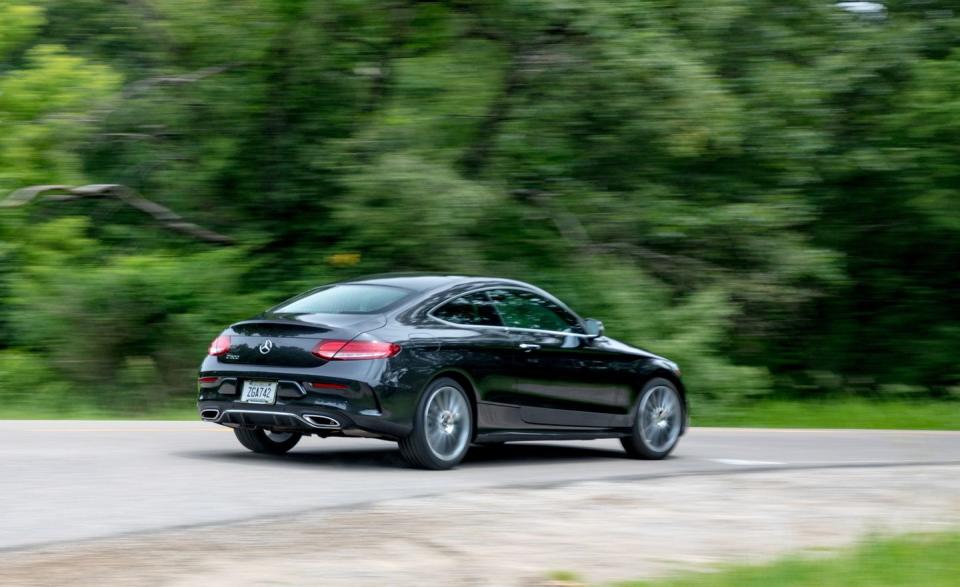
Subjective scrutiny of the new engine is a mixed bag. The four-cylinder feels more eager to rev than before, and it suffers less turbo lag (wherein the driver presses the gas pedal but the turbocharger hasn't yet spun up and begun helping the engine produce extra power, which registers as flaccid initial response). Mercedes's nine-speed automatic transmission also lends the engine a perkier character, thanks to the additional choice of ratios and shorter gearing in first through seventh gears relative to the old seven-speed unit. Sadly, the new engine still belts out a flat, blender-like sound when being worked hard.
Still Sexy
Our favorite part of the C300 coupe, its looks, are unaffected for 2019. Freshened headlights and taillights are the only external changes for this fetching two-door, which has a pert appearance and elegant lines. Every Mercedes-Benz coupe looks essentially the same no matter its size, excepting only the AMG GT sports car, meaning the C-class has much the same visual punch as the larger and much pricier E- and S-class coupes.
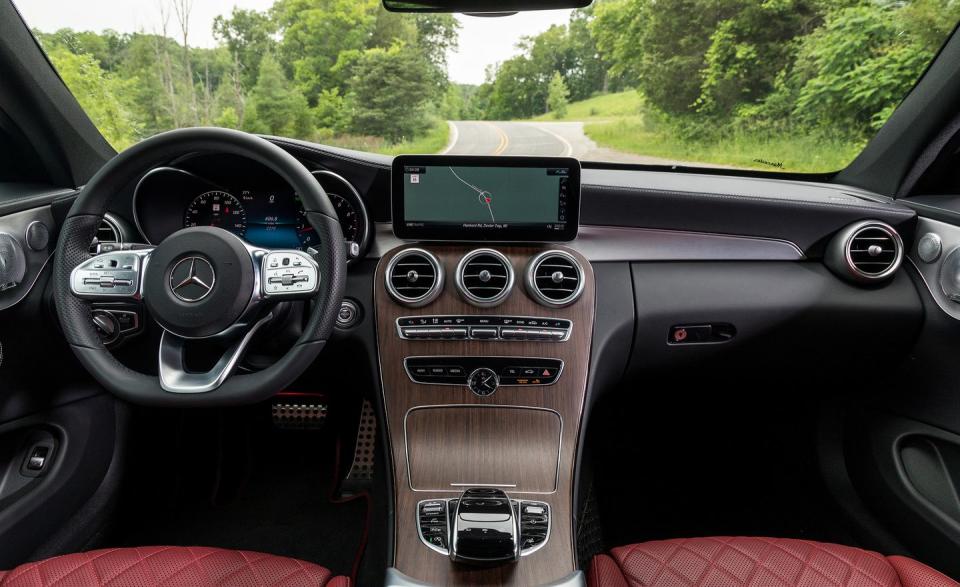
Mercedes also has retuned the C300's over-the-road behavior to be closer to those larger coupes' comfortable, luxurious comportments. Where the previous C coupe's ride quality was firm bordering on harsh, particularly at the rear end, there now is a greater sense of cushioned refinement. Wheel impacts over road imperfections are quieter, and jolts to the body are softer.
None of these changes seem to have had any effect on the C300's agility or sense of control. Our summer-tire-equipped test car recorded the same 0.91 g around the skidpad as a 2017 model we tested. (The 19-inch high-performance tires are a no-cost option, but the AMG-style wheels they're mounted on cost $500.) The 2019 coupe's braking distance from 70 mph is a minor six feet longer than the 2017's, though it stopped in a still-good 163 feet.
Similarly, the rest of the C-class's classy package remains the same. The glamorous interior will wow your friends, especially if you option up your C300 with $16,415 in extras like those on our test car. Of that sum, $2250 was attributable to the enhanced-for-2019 Driver Assistance package. An upgraded electronics architecture helps the C-class support improved active-safety features, including an automatic lane-change feature and a smarter radar-based cruise control system. A digital gauge cluster (a $750 option) also is new. And speaking of prices, the 2019 C300 coupe starts at $44,795—only $600 more than the 2018 version. For the new engine's extra pep and efficiency, that's as eye-popping as the C-class coupe's design.
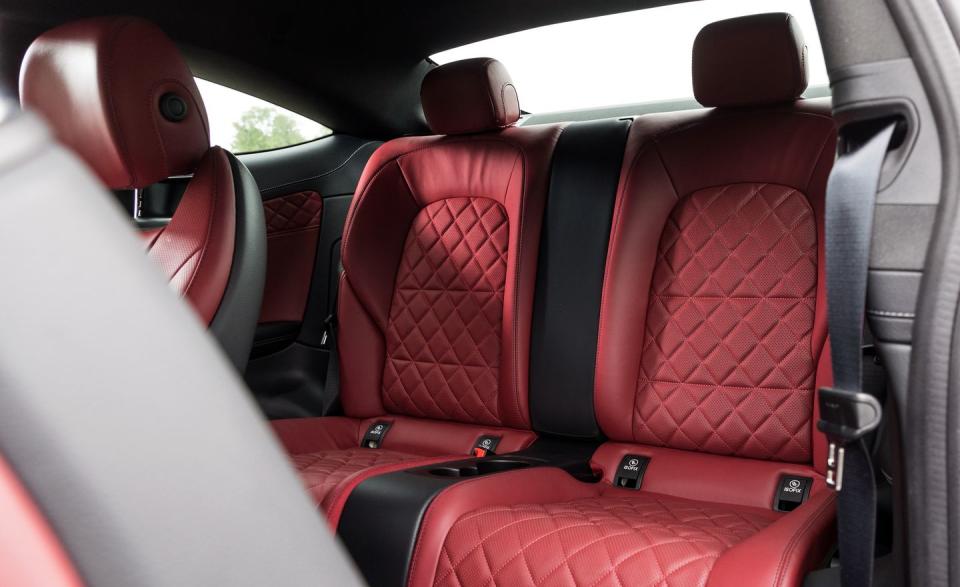
('You Might Also Like',)

